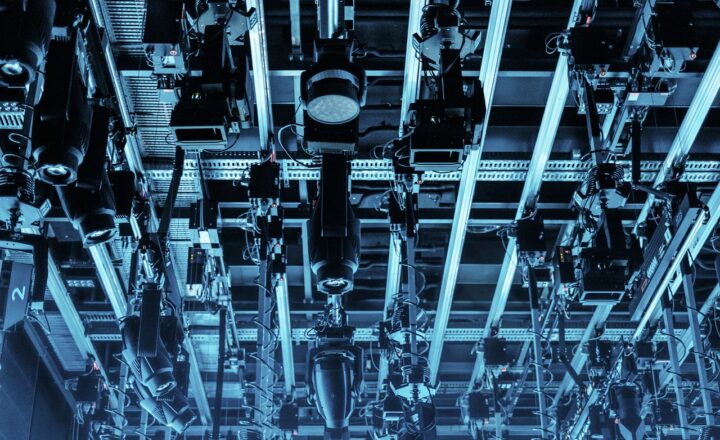How Night Vision Technology Gives Modern Armies the Upper Hand in Combat
November 16, 2024

In the ever-evolving landscape of modern warfare, the ability to see clearly in low-light conditions has become a cornerstone of military superiority. Night vision technology, once a novelty, has now transformed into an essential tool for contemporary armed forces. This article delves deep into the history, types, functionalities, and strategic advantages of night vision technology, illustrating how it provides modern armies with a significant edge in combat.
1. A Brief History of Night Vision Technology
Night vision technology has its roots in World War II when early forms of night vision devices began to emerge. The German army first utilized infrared technology on the battlefield, which gave them a temporary advantage over Allied forces. However, it wasn’t until the Vietnam War that night vision became widely adopted by military forces. The development of the first-generation night vision goggles allowed soldiers to see in the dark, fundamentally changing tactics and combat outcomes.
As technology has progressed, night vision devices have evolved through multiple generations, leading to the sophisticated systems in use today. The subsequent generations, from the second generation with improved sensitivity to the third and fourth generations that utilize image intensifying and thermal technology, have cemented night vision as an indispensable aspect of modern military operations.
2. Types of Night Vision Technology
There are several types of night vision technology currently in use, each with its unique advantages:
- Image Intensifier Technology: This technology amplifies existing light sources, allowing users to see in very low-light conditions. It’s commonly used in goggles and weapon sights.
- Thermal Imaging: This technology detects heat emitted by objects, making it effective for spotting targets in complete darkness, smoke, or fog. It is crucial for reconnaissance and surveillance missions.
- Fusion Technology: This innovative approach combines image intensifying and thermal imaging capabilities, providing a more comprehensive view in diverse environments. Soldiers using fusion technology can switch between modes, enhancing their situational awareness.
Each type of night vision technology plays a pivotal role in allowing modern armies to operate effectively in darkness, significantly influencing tactics and combat strategies.
3. Practical Applications of Night Vision in Combat
The applications of night vision technology in modern warfare are vast. Here are just a few key uses:
- Enhanced Reconnaissance: Night vision allows reconnaissance units to gather intelligence without detection, providing essential information about enemy movements and positions, which can shift the tide of battle.
- Tactical Advantage in Engagements: Soldiers equipped with night vision can engage targets while remaining concealed, utilizing the cover of darkness to launch surprise attacks that would be impossible without this technology.
- Improved Navigation and Coordination: Night vision aids in navigating hostile environments, ensuring that troops can move efficiently and safely even when visibility is compromised. This technology enhances coordination between units under low-light conditions.
- Directing Air Support: Night vision linked to drones or air support platforms can provide precise targeting information, optimizing air strikes in darkness and making ground operations more effective.
These applications showcase night vision technology’s transformative influence on military strategies, ensuring that modern armies maintain a tactical edge over adversaries in increasingly complex combat environments.
4. The Psychological Impact of Night Vision Technologies
The psychological advantage of possessing superior night vision capabilities cannot be understated. Knowing that the enemy can see you while you remain blind significantly alters the dynamics of engagement.
On the battlefield, the terror of not knowing where the enemy is can demoralize troops. In contrast, soldiers equipped with night vision gain confidence, knowing they can engage in combat on equal footing regardless of the lighting conditions. This shift in confidence frequently leads to aggressive tactics and initiatives that can lead to decisive victories.
Moreover, the mere presence of technologically equipped forces can deter potential threats. The understanding that an adversary possesses comprehensive night vision capabilities can lead to hesitation, strategic reevaluation, and may prevent armed conflict altogether.
5. Challenges and Limitations of Night Vision Technology
While night vision technology offers undeniable advantages, it is not without its challenges:
- Dependence on Light Sources: Image intensifier devices require some ambient light to function effectively, limiting their usability in completely dark environments like underground tunnels or deep caves.
- Cost and Maintenance: High-quality night vision devices are expensive and require regular maintenance, limiting accessibility for some military units compared to cheaper optical devices.
- Vulnerability to Countermeasures: As adversaries become aware of night vision technologies, they may develop methods to counteract these systems, pushing defense and offense strategies to evolve continuously.
Understanding these limitations is essential for militaries to adapt their strategies and develop countermeasures to maintain their advantages on the battlefield.
6. Future Developments in Night Vision Technology
The future of night vision technology holds exciting prospects. With advances in materials science and miniaturization, we can expect:
- Augmented Reality Integration: Future systems may incorporate augmented reality, overlaying critical information directly into the soldier’s line of sight, enhancing situational awareness without diverting focus.
- Artificial Intelligence Enhancements: AI algorithms may assist with target recognition and environmental analysis, providing soldiers with critical insights in real time.
- Lightweight and Ergonomic Designs: As technology evolves, we can expect lighter systems that are easier to use and wear, reducing fatigue during prolonged use.
As research continues, these innovations promise to further cement night vision technology as a cornerstone of modern military capabilities, ensuring that armed forces remain equipped to dominate the battlespace.
Conclusion
Night vision technology has revolutionized modern combat, providing soldiers with the ability to see in the dark and maintain tactical superiority. With applications spanning reconnaissance, engagement, navigation, and psychological warfare, it ultimately enhances military effectiveness in various environments.
As we look towards the future, the continuous evolution of night vision capabilities will only amplify their strategic importance, ensuring that modern armies can navigate and dominate in conditions previously thought impossible to conquer. Understanding the significance of night vision technology is paramount for anyone interested in the dynamics of modern warfare, reaffirming its status as a key enabler of military success in the dark.








